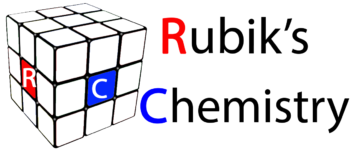The Synthesis of Oteseconazole (Vivjoa)

A patent (Ref. 1) published in 2017 disclosed the most recent synthesis of oteseconazole, featuring an asymmetric Henry reaction to install the tertiary hydroxy group. Dibromo pyridine 2 was used as the starting point. Eto-Ashwood reductive coupling of 2 and bromodifluoroacetate 3 eliminated two bromides to give ester 4 with Cu powder as the reducing agent in DMSO. By the treatment of morpholine 5, the ester 4 was converted to Weinreb amide 6, which was used for Grignard reaction. The freshly prepared Grignard reagent 7 replaced the morpholine to result in ketone 8 with almost quantitative yield. Then an asymmetric Henry reaction was employed to set up chiral tertiary alcohol from ketone 8. After optimization of the reaction by screening chiral ligands (Table 1), ligand 9 was identified to provide optimal result, affording alcohol 10 with 80% ee in 75% yield. Upon reduction of the nitro group in 10 with hydrogen, the resulted amine 11 was used for chiral resolution by forming salt with (D)-tartaric acid 12. The enantiomer-enriched material salt 13 had an ee ratio of 99.4%. The salt 13, after being neutralized to release amine, was used for Suzuki reaction with boronic acid 14 to give intermediate 15, which was purified by forming crystallizable salt 16 with (D)-tartaric acid 12. With the hemi tartrate amine salt 16, an acid-catalyzed tetrazole formation reaction was applied to build the five-membered heterocyclic ring using sodium azide (NaN3) and triethyl orthoformate (HC(OEt)3) to deliver oteseconazole 1 in 85% yield. The impurity and ee ratio of 1 was further improved by forming benzensulfonate salt 18.
Step 1. Eto-Ashwood reductive coupling (Asian J. Org.Chem.2015,4,1262–1264): 3, Cu, DMSO, 55%.
Step 2. Morpholine amide synthesis: 5, heptane, 60 °C, 77%.
Step 3. Grignard reaction: 7, THF, -3 to 2 °C, 98.5%.
Step 4. Asymmetric Henry Reaction: CH3NO2, 9, THF, 5 °C, 75% (80% ee) (crude).
Step 5. Nitro hydrogenation: H2 (4 bar), methanol, (crude, 80% ee).
Step 6. Chiral resolution: 12, IPA/ACN, 33.2% (99.4% ee).
Step 7. Suzuki coupling: 14, Pd(dppf)Cl2, K2CO3, H2O/2-butanol (Crude).
Step 7’. Tartrate salt formation, Purification: 12, 2-butanol, 83% (2 steps) (99.5%).
Step 8. Tetrazole formation (Eur. J. Org. Chem.2006, 2723–2726): TMSN3, CH(OEt)3, AcONa, AcOH, 85% (99.6%).
Step 9. Salt formation: 17, EtOAc, 86%.

In the same patent, an alternate route was also explored. In the second route, the tetrazole was introduced first with amine salt 13 to result in 19. The following Suzuki coupling of 19 and boronic acid 14 delivered the final product 1, which contained more impurities due to skipping one salt formation step in scheme 1.


The patent also disclosed the optimization of the asymmetric Henry reaction by screening ligands. The ligand 9 displayed the best selectivity with 90% desired enantiomer and over 95% conversion. Other ligands gave almost no selectivity to the desired isomer. The selectivity of the reaction could be further improved by modifying ligand 9, plus examining different copper sources.
Copper Sources


In other three patents claimed three different routes, respectively, to setup the tertiary alcohol including asymmetric dihydroxylation, asymmetric TMS-cyanohydrin formation and Johnson-Corey-Chaykovsky reaction. But only the last claim showed the example experiments.
References
- Wirth, D. D.; Yates, C. M.; Hoekstra, W. J.; Bindl, M. F.; Hartmann, E. Process for enantioselective preparation of tetrazolyl pyridinyl diaryl propanols as antifungal drugs and their precursors. WO2017049080 A1 2017.
- Hoekstra, W. J.; Wirth, D. D.; Ehiwe, T.; Bonnaud, T. Antifungal compounds and processes for making. WO2016149486 A1 2016.
- Hoekstra, W. J.; Yates, C. M.; Behnke, M.; Alimardanov, A.; David, S. A.; et al. Process for preparation of an antifungal tetrazole compound. WO2015143184 A1 2015.
- Hoekstra, W. J.; Yates, C. M.; Behnke, M.; Alimardanov, A.; David, S. A.; et al. Process for preparation of an antifungal tetrazole compound. WO2015143180 A1 2015.
- Hoekstra, W. J.; Yates, C. M.; Behnke, M.; Alimardanov, A.; David, S. A.; et al. Preparation of an antifungal tetrazole compound. WO2015143172 A1 2015.
- Hoekstra, W. J.; Yates, C. M. Process for the preparation of an antifungal tetrazole compound. WO 2015143142 A1 2015.
- Hoekstra, W. J.; Schotzinger, R. J.; Rafferty, S. W. Preparation and use of fungicidal azole compounds in agricultural applications. WO2013110002 A1 2013.
- Hoekstra, W. J.; Schotzinger, R. J.; Rafferty, S. W. Preparation of substituted 1-(5-phenyl-pyridin-2-yl)propan-2-ol derivatives as metalloenzyme inhibitors. WO2013109998 A1 2013.
- Hoekstra, W. J.; Schotzinger, R. J.; Rafferty, S. W. Preparation of pyridine-based compounds as metalloenzyme inhibitor compounds for treating diseases in animals and plants. WO2011133875 A2 2011.
